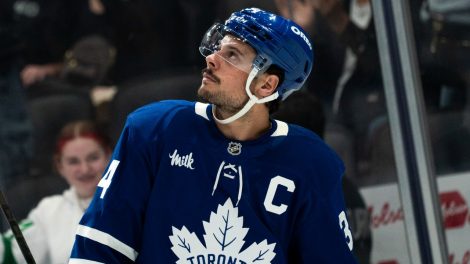At this same time last season, the Vegas Golden Knights were 9-5-1 and the Cinderella story was off to the ball. Also at this same time we were citing all the unsustainable stats being performed by the expansion squad, acknowledging that while, yes, their story was great, there was no way the first-year team of cast-offs was going to accomplish anything too meaningful by April.
Well, we all know how that ended.
So as Vegas is off to a slower 7-8-1 start in 2018-19, it’d be wise to not draw any conclusions about their demise too early. Sure, many expected Vegas to regress in some ways, but not to this degree as a team. The Golden Knights are 26th in the NHL with more games played than anyone else behind them.
So what has happened out of the gate?
There are a number of factors at play, and here we’ll highlight six of them:
THE SCHEDULE
Remember the Vegas Flu? The Golden Knights won 19 of their first 23 home games and were tough to beat there all season long. They were 5-3 at home in the playoffs, dropping their final two games at T-Mobile Arena to the Washington Capitals.
Given this home-ice success, it was certainly advantageous when, after a two-game road trip to start their existence, Vegas came home to play in their friendly confines for seven games in a row over a two-and-a-half week period. They only lost one of those games.
This season was a bit more of a challenge. After playing one home game to start, Vegas went on an eight-day, five-game road trip over which time they scored just eight goals. They did come home for five straight after that from Oct. 16-28 — and won four of them — but six of their next seven games after that are roadies. Saturday’s game in Montreal is the second-last stop on this trip.
Vegas is 4-2-1 at home so far this season and 3-6-0 on the road right now, so the fact they had a less favourable start to the schedule in 2018-19 is one reason they are slower out of the gate in Year 2.
[snippet ID=3322139]
WILLIAM KARLSSON’S REGRESSION
Prior to last season, Karlsson’s highest goal mark in a season was nine and his career shooting percentage was below 8.3. So when he exploded for 43 goals in 2017-18 by converting on nearly a quarter of his shots, it was easy to see him crashing back to a level of reality.
Now, Karlsson is better than the player he was in Columbus and is fully capable of playing between Reilly Smith and Jonathan Marchessault on Vegas’ top line. But he’s not among the NHL’s elite goal men.
So far this season Karlsson is averaging fewer shots per game and has three goals through his first 16 games on a much more digestable 10 per cent shooting rate. This would put him on pace for a 15-goal season, which would be a huge disappointment, but if he can get his shot rate back up to the level it was at in 2017-18, 20 goals is attainable.
Vegas’ slow start is, of course, not on Karlsson alone, but if your top line centre is going to end up with closer to half his goal total from the season before you’re going to feel it as an organization. The good news is his assist rate is actually a little higher than last season, so he could still crack 60 points. That number would be just fine.
INJURIES
This should be the most obvious reason Vegas hasn’t been as hot in October.
First, after losing both James Neal and David Perron off their second line to free agency, the Knights were able to sign another UFA in Paul Stastny, and trade for a scoring winger in Max Pacioretty to seemingly end up with a couple upgrades on that second unit. But after just three games Stastny went down to injury and will miss approximately two months of time. Alex Tuch, who was the planned right winger for the second line and just signed a seven-year extension, missed the start of the season himself and didn’t get into game action until Oct. 24.
That left Pacioretty without a strong playmaker down the middle and the emerging Tuch on the opposite wing. Vegas’ lack of depth was exposed as the likes of Cody Eakin (a great third-line centre with limited offensive upside who missed a couple games himself), Tomas Hyka and Tomas Nosek had to slide up into the top six. Pacioretty himself missed time towards the end of October and start of November with a concussion and has just two goals in his first 12 games.
Now Erik Haula is out after being hit this week against the Toronto Maple Leafs and he scored 29 goals for Vegas last season.
And though Nate Schmidt‘s absence isn’t injury related — he was suspended 20 games for use of PEDs — the loss of the team’s primary minute-eater on the back end stings.
THE LEAGUE KNOWS THEM
In hindsight, no one knew what Vegas was capable of in Year 1. But in Year 2 the team came in with higher expectations and the rest of the league knew better what they were about.
“When you go to the finals, teams are ready to play you,” Golden Knights GM George McPhee said on Hockey Central at Noon on Tuesday. “They’re excited to play you. Sort of a measuring stick for a team that had a real good year last year. We faced a lot of this in the second half last year, but we’re getting it every night now.”
Especially given the injuries, teams can focus in on Vegas’ top line — no one is getting surprised by Marchessault any more. Shut down their top line and you’ll be in a pretty good position to win. This year NHL teams and their head coaches came in with a better understanding of how to game plan the Knights, what their strengths and weaknesses are, and how to go about beating them.
This doesn’t mean Vegas is doomed to miss the playoffs. Ironically enough some averages that are going against them right now should swing back in their favour at some point.
UNLUCKY
In some ways, Vegas was one of the luckier teams in the NHL last season so to see them at the bottom of the league with a 95.06 PDO (a combination of shooting and save percentage) could be karma hitting back.
There is a lot to still like about the way Vegas is playing. More often than not they are the ones controlling play and outshooting their competition. Their 58.785 Corsi percentage at 5-on-5 is second-best in the league and their plus-115 shot differential at 5-on-5 is bettered by just two other NHL teams. And yet they have a minus-9 goal rate at 5-on-5 that is third-worst in the NHL.
How is this happening? Vegas has the worst shooting percentage in the league (5.61) after finishing with the sixth-best rate last season. Their team save percentage of .895 is also second-worst in the league.
The good news is both will definitely recover to some degree. Last year’s worst shooting team finished with a 6.16 shooting percentage and the worst goaltending unit finished with a .908 save percentage. We can probably agree this year’s Golden Knights are neither the worst shooters, nor puck stoppers, in the NHL.
GOALTENDING
Expanding on the point above, it all went way too smoothly for Vegas between the pipes last season. And not just Marc-Andre Fleury.
Limited by injury in 2017-18, Fleury only suited up for 46 games and it seemed almost whoever else the Golden Knights put in net excelled. Malcolm Subban had a 13-4-2 record and .910 save percentage after getting claimed off waivers. In four games, Oscar Dansk earned a shutout and posted a .946 save percentage. And though Max Lagace’s numbers weren’t as stellar, he still had a .500 record.
This year Fleury has been healthy and played in 14 of their 16 games, but has a .901 save percentage that is tied for 29th in the league among goalies with five games played. You think Tuukka Rask has been struggling in Boston? He and Fleury have identical save rates.
Fleury’s workload hasn’t been too heavy as Vegas allows the second-fewest shots against in the league so his GAA is still just outside the top 20. Fleury is 33, sure, but only once in the past six seasons has he finished with a save percentage below .915.
[relatedlinks]








